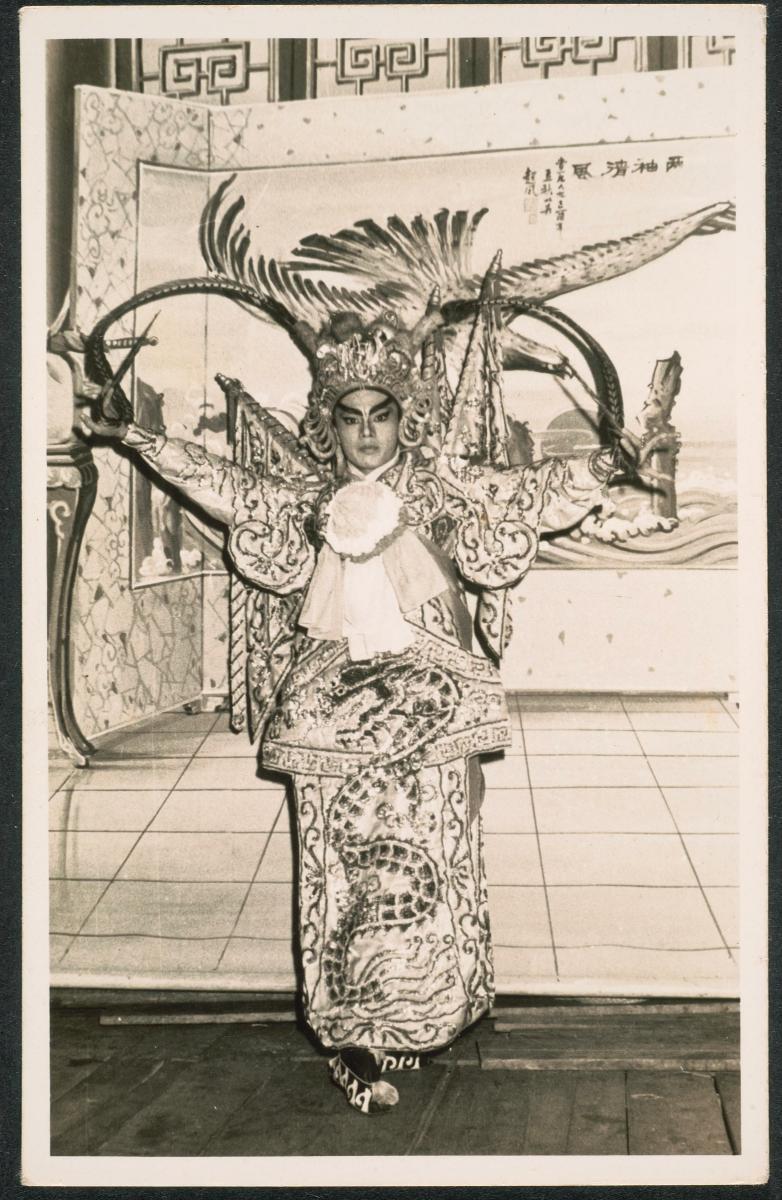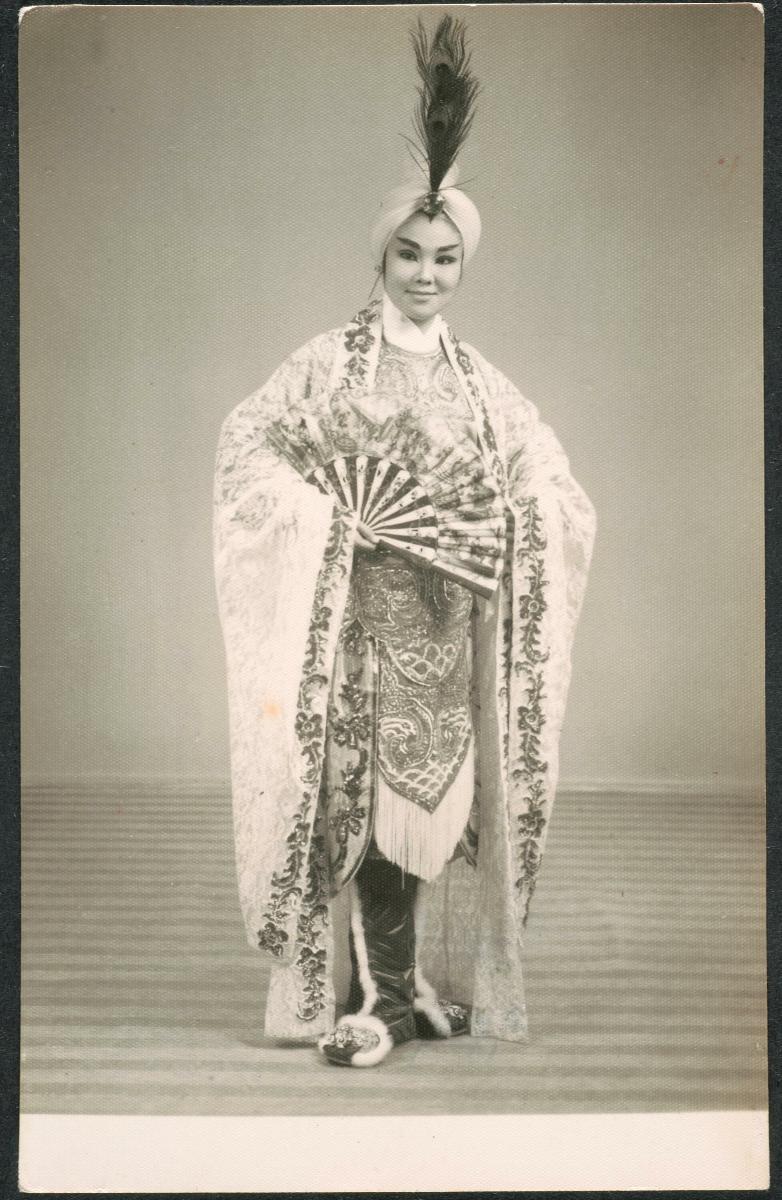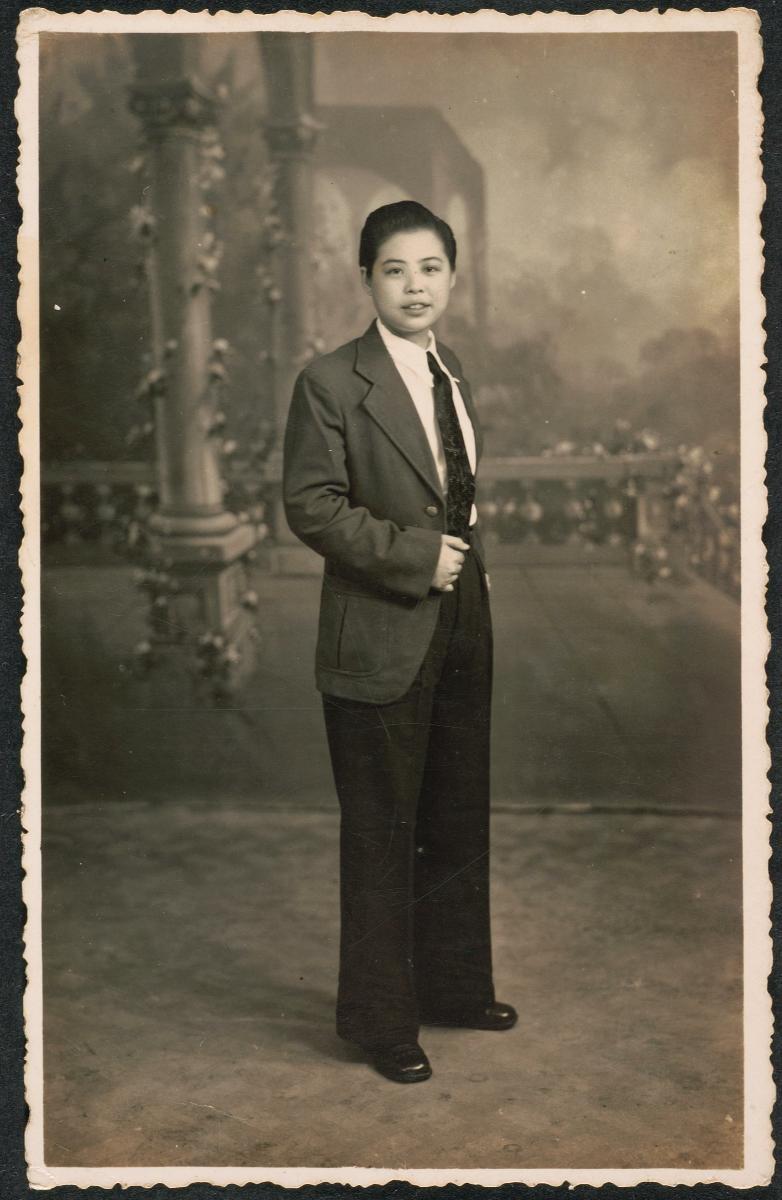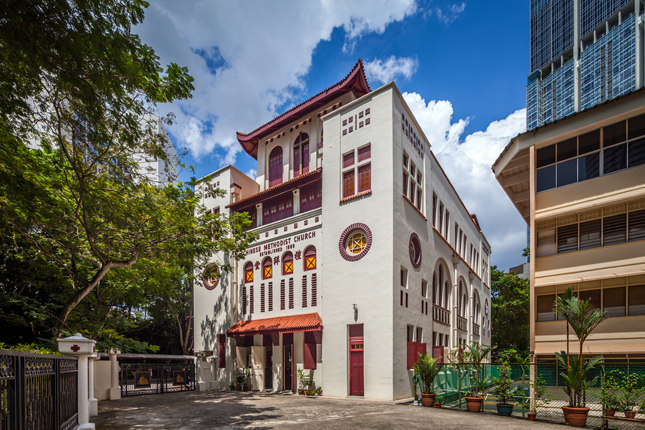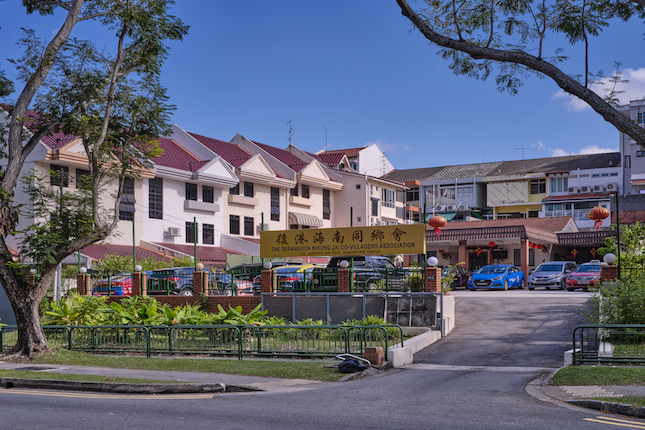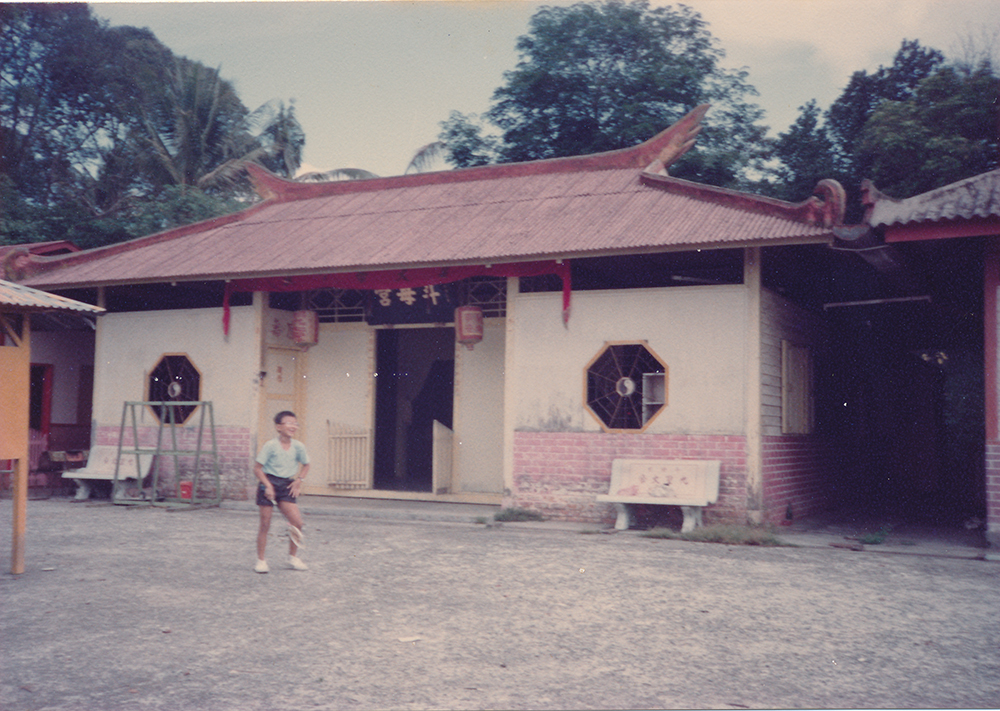The actor here is dressed as a ‘sheng’ or male character, one of the four main roles enacted on the Chinese opera stage; the other roles being 'dan' (the female), 'jing' (the painted face) and 'chou' (the clown). Chinese opera costumes are typically decorated with intricate designs that indicate the age, traits and social status of the character. In this instance, it is clear from the actor’s regalia that the role portrayed is that of a military official, or ‘wu sheng’, a subdivision of the main male role. The actor’s position as that of a warrior is confirmed by the special headgear he is sporting, which has two long pheasant feathers attached to it. The headdress is another important element of the costume, as the ornaments adorning it help to distinguish specific roles. Known by the Malay term ‘wayang’, which means ‘performance’, Chinese opera in Singapore can be traced back to the 19th century with the arrival of Chinese immigrants. Up until the 1930s, wayang was a popular performing art, both as a platform for religious worship and as a cheap form of entertainment.




